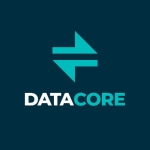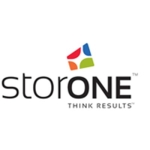What is our primary use case?
We are capable of implementing, migrating, and the configuration information of NetApp. We have 7-Mode and C-mode ONTAP operating systems from NetApp. 7-Mode, which is out of date and has expired from NetApp's vendor. They have created their own kernel for ONTAP, a cluster Data ONTAP. For the time being, they are only doing and providing the ONTAP cluster data, ONTAP to the customer. Customers who are using the 7-Mode data, 7-Mode ONTAP are systems that have not yet been upgraded. Whatever previous series hardware they are using, is incompatible with the C mode cluster data ONTAP. As a result, they are constantly taking care of and having to refresh their customers and providing the solution to the migratory or existing data to the new Data ONTAP system.
I've implemented many customized enterprise levels, and I've also done many migrations. Basically, storage that is currently in use, as well as a SAN protocol and how we are using it for all of our heterogeneous environments, such as VMware, Windows, Linux, and Unix.
NetApp ONTAP is an operating system, similar to Windows, which we use for accessing the Windows client.
NetApp is storage similar to EMC. EMC is one of the storage vendors; they provide EMC, such as Dell EMC, Synology, Dell, and IBM. NetApp is one of the market's leading providers of SAN and NAS protocols to end users, as well as critical business solutions.
Currently, with NetApp application scenarios you can see that if you have a high, business-critical application, it will require high IOPs to access this application from one of the storage options listed. Assume you're using an SAP HANA, or any other high IOPs utilization application, such as SAP, HANA, or any other tool. In these cases, NetApp has a solution. They have hardware such as an all-flash disc, which means they can use all-flash storage in between this solution fulfillment. If you have a hundred users logging in at the same time, you are using a business-critical application, it should not include any database applications such as Oracle Database. In such cases, they provide the SAN-based solution from NetApp and meet your NetApp storage requirements.
How has it helped my organization?
NetApp storage is also a hybrid solution. The cloud is essentially in the market right now, but no one is moving all of this data to the cloud.
If the primary data center is unavailable, you can deploy your data from the cloud vendor. This type of solution can also be obtained from NetApp storage.
What is most valuable?
With NetApp ONTAP your storage requirement is met. If you provide a solution to any of our customers, we will first take the accessories. We will collect the necessary requirements from the customers, just as we will conduct the assessment from the customer's end.
NetApp has a variety of hardware and solutions available there. Based on that, they can provide a low-level and high-level diagram and inform customers. If you want to use such a solution, such as a hardware solution and a software solution like this, you can, you can implement it at the customer, and you can use it. Like VMware, we can use it in most NetApp players, most of whom are in hardware and network storage. From a storage standpoint, NetApp is the number one partner and the number one equipment manufacturer.
What needs improvement?
If you wanted to configure the QAs policies right now, I believe you should be technical as well. If you are not aware of such devices and technology, you will not understand.
We will assess the existing infrastructure. If they want to improve the existing storage, not just for NetApp, it will be based on what is currently available and being used.
Existing IOPs will not be compatible with your current user, regardless of who is concurrently connected to the storage.
We'll assess the existing infrastructure, and if they're ready to buy any new hardware, any new solution, we'll add any additional access they'll give solid-state drives. And we will improve the performance. We will increase the number of drives and the overall memory utilization. As a result, the end-user cannot determine the exact utilization of the speed and your IOPs. we'll put it to use.
If there is a bottleneck in the network as well, we will find out exactly what assessment is now, and we will make decisions based on that assessment. Based on the assessment, we will make recommendations for improvement and provide guidelines for exactly what we need to do.
In terms of the storage, if you implemented the storage one time and if you provided the volumes, you also provided the opportunity to learn. If you provided dials and QS policies, the client and user are not required, and they are not asking for the extension and all of these things. If you configure a quota type of information, or if some of the users are requesting data for a hundred UPR changes before the particular data, particular folder, in this case, we can do the automation involved there.
Until we get the automatic resize working properly, if a threshold is reached out to a specific percentage, such as just 90 percent, or an aggregated breach is 90 percent. This is the kind of data that the automation process can provide.
That is the fundamental thing in our NetApp storage right now. One of the things that are happening now is that a new requirement has arisen from the end-user, such as the desire to create new volumes of new LAN and present them to a specific physical host, a virtual host, a Windows host, or a Linux host. We have to create this information, this script, and just fill it in their format.
NetApp is currently providing monitoring tools. Assume you have multiple clusters in your organization, a large number of containers, and a large number of countries if you are currently using your storage. There's no need to log in to each cluster and storage separately, there is a centralized monitoring and management tool where you can simply log it into one single signup control.
It's as simple as a single click. If you wanted to manage these jobs and run the one-sum script, you didn't have to log in to each and every cluster and storage; instead, you just needed to log in once. With a single click, you can access your own information via someone else's system and manage their command tools from the network, which they have developed.
They could make the access a bit easier.
Every cluster and storage must be done manually the first time, during the implementation and deployment phases. If it is deployed completely, you won't have to do anything manually. You must perform online on all of these automation and all of these centralized, single controls.
They need centralized controls.
Not every organization is small, and they are using multiple locations. They are utilizing a number of DRaaS solutions. If your primary data center is down, is it due to any of these hardware or natural environment, natural disasters, human beings, or mistakes now? You don't have to worry about this in these cases. Simply click the activate button on the DR site, and your data will be deployed from the DR storage. There's nothing to be concerned about. It's simple.
You can migrate your existing data right now. As a result, the feature is now being used everywhere, and what everyone is looking for, is on a cloud right now. For example, your ONTAP system manager, cloud-only the features that are combined with that cloud. If you open your NetApp ONTAP system manager control, it will combine the cloud volumes and you can simply map your three-bucket location, three-bucket credential, and jump in your data going to the cloud.
You can either give it a second copy on the cloud network or use cloud data ONTAP. If you've wired your data to the cloud, ONTAP, AWS, Azure, or Google. So it can simply create a duplicate copy on the cloud player as well.
For how long have I used the solution?
My primary expertise is in NetApp ONTAP. I have been using NetApp ONTAP, implementing and providing solutions for the last seven years.
The most recent version is used at my client's location.
We had an 18, 20 cluster on NetApp that was a near DR solution, primary solution, secondary solution, such as a DR solution, or a long retention archive backup solution with disc level backup.
They have also implemented and improved the solution with a cloud vendor, such as Azure Data ONAP, AWS Data ONAP, or Google Data ONAP, all of which are major players that are partnering with NetApp to provide a cloud-based solution.
What do I think about the stability of the solution?
In terms of performance and reliability, NetApp ONTAP is fantastic. If you look at it, and if you go with NetApp now, everything you will get as compared to other storage, NetApp is extremely stable and reliable storage.
In comparison to IBM and Dell EMC. As a result, NetApp is a fantastic tool in my opinion. If you have to do anything, it will be simple, and you will not have to worry about your NetApp data. If you think about it, there are disasters over there, and my data will be lost or something like that, but there is nothing to worry about.
What do I think about the scalability of the solution?
We have a scale-out and scale its solution based on the type of information and solution you are currently deploying. NetApp is deployed in many locations. If you deploy the current solution, we can do it as a scale-out and scaling kind of device. Based on that, we can expand the other data size and use it for environmental purposes.
How are customer service and support?
We never contact them, but if we need assistance, such as a hardware solution or a hardware replacement, we must contact them because we do not provide the hardware. They are now providing the hardware. But, if you look at the software part of the picture, I don't want to reach out to NetApp. I'm very capable of doing it every time, both for storage and for the NetApp ONTAP system.
Which solution did I use previously and why did I switch?
We work with VMware, Storage, and Nutanix NCI solutions.
How was the initial setup?
Actually, complex means that everyone is an expert in a specific device or a specific product. No. How can we say it is complex, or how can we say it is simple?
From my perspective, I'll say it's simple for me, but if you're looking for the first time, no, it will appear to be quite difficult.
From my perspective, it's simple, because I've been working with NetApp for over seven years and am familiar with its operations, and migration. Based on that, I can tell you that it is easy for me.
If you want to set up primary and secondary storage now, you only have a few days. This is a production idea type of solution. It will only take three to four days. But everything should be in its proper place. We can simply order it. But if you say that, we don't have the space, we don't have the cooling power systems, and we don't have the power supply, it will take a long time to deploy. However, if you want to deploy the storage, and if everything is already in place, it will most likely take four to five days for both site location storage.
What's my experience with pricing, setup cost, and licensing?
It is a perpetual license. You are not required to purchase on a monthly or yearly basis. Whenever you purchase any type of solution software license, it should be a perpetual license that is valid for a lifetime.
When you purchase NetApp for the first time they will provide you with the standard license, or a premium license, and even a standard bundle solution license. If you choose the premium bundle, each license will come with only that bundle.
They are offering the protocol device license for sale. If you want to use a CIP protocol, you must purchase the CIP. If you want to use the NFS protocol, you must purchase the NPS license if you want to use DFC, VME, or FCoE. If you only buy the bundle license now, each license will come in that bundle's bundle package.
What other advice do I have?
NetApp storage is my primary skill; I am an L3 or L4 on NetApp.
I'm building the NetApp from scratch based on what others need, and which one must be used, However, NetApp currently has a pre-deployed ONTAP version, that includes a pre-deployed ONTAP version in NetApp storage. They are assigning devices and hard discs to each of the controllers. They cannot have an operating system based on that request. They have been deployed. Aside from that, we will need to connect to your laptop using this console cable, serial console cable. We simply need to assign that to the serial console.
If you configure the management IP, we can put it in their networks and take the RDP or partition from your network. That is any location on your network. From there, we can simply configure the cluster. We can set these up with the data aggregate, volumes, learn and share, Q3 and quota. If they wanted to learn about the AFC solution, we simply need to configure the fiber channel cables and connect them to the SAN network and cable. If you wanted to create the zoning, analyze, and provide to a physical virtual.
I would rate NetApp ONTAP a ten out of ten.
Which deployment model are you using for this solution?
On-premises
Disclosure: My company does not have a business relationship with this vendor other than being a customer.









